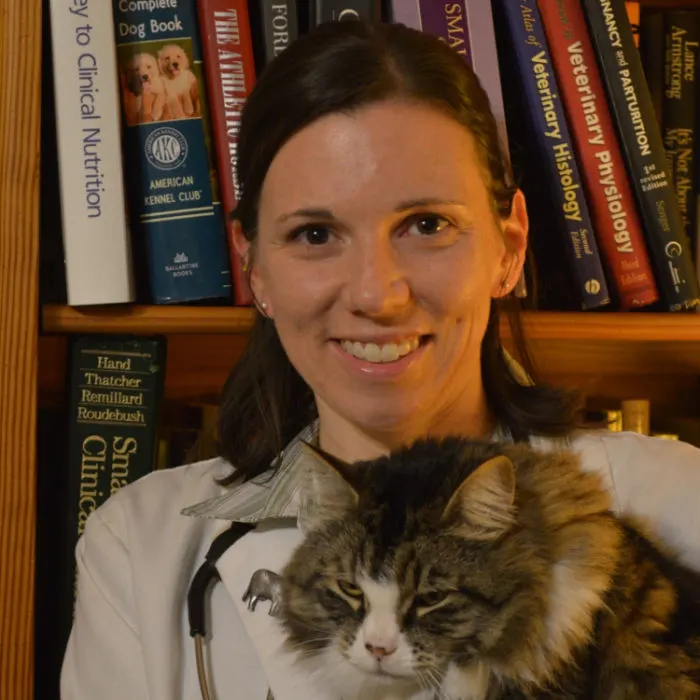In short, yes. Guinea pigs need hay in their daily diet. But you probably already feed your guinea pig pellets, right? So, why would you need to add hay?
As a piggy parent, you only want what’s best for your pet guinea pigs. Not only is hay great for your pet’s digestion, but it’s also some of the best bedding for guinea pigs. So, adding hay is a good way to ensure that your fluff ball gets the right amount of nutrition and benefits.
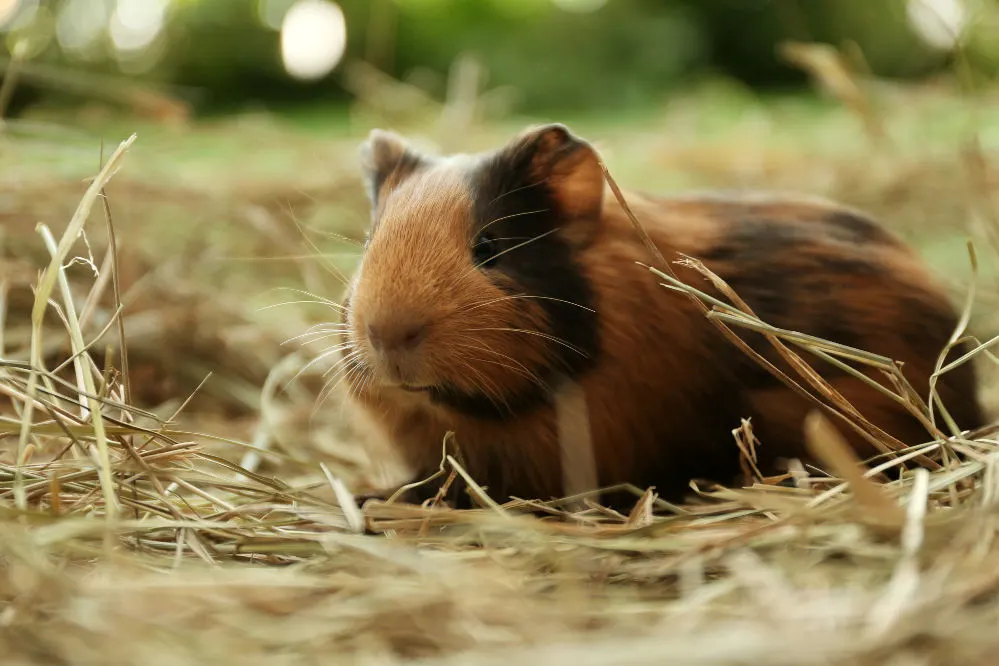
But there is a right way (and a not-so-right way) of feeding them hay. Find out how below.
Benefits of hay
A healthy guinea pig diet consists of fresh water, plant-based food, and a treat or two. This is because this is close to their natural diet in the wild.
As a pet owner, you don’t want to disrupt their diet too much in order to keep them healthy. Hay may be the best way to stimulate your pet’s mind, body, and stomach.
Teeth
A guinea pig’s teeth are constantly growing, requiring continuous maintenance. Overgrown teeth can result in sensitive and cut gums, which can lead to dental abscesses. Certain foods like hay can help your pet keep its teeth in tip-top shape.
By munching on lots of hay, your guinea pig will be able to whittle down their teeth to a manageable length.
Digestive system
Fresh vegetables and grass hay are pretty similar to what they’ve been eating in the wild. These foods help keep their digestive systems regular. And, since hay usually has a high fiber level, staying regular should be no problem.
Without fiber, your pet’s digestive system could have a difficult time, and they can even become sick. As mentioned before, hay is essential for dental health too, and if your pet can’t eat, they can’t get the nutrients they need.
Mental stimulation
As much as unlimited hay can be good for your pet’s physical health, it’s also essential for their mental health. Cavies will often use hay in their playtime routine when they’re bored. You’ll often see them burrowing or cuddling with it.
It’s also a good idea to add some hay to help simulate their natural environment. Remember that they’re used to being surrounded by fresh grass in the wild. So this will make them feel more at home and secure.
How much hay should I feed my guinea pig?
Guinea pigs are natural herbivores. And, because they can’t nibble on vegetation growing around the Andes mountaintops like they’re used to, fresh hay and plant-based food are the next best thing.
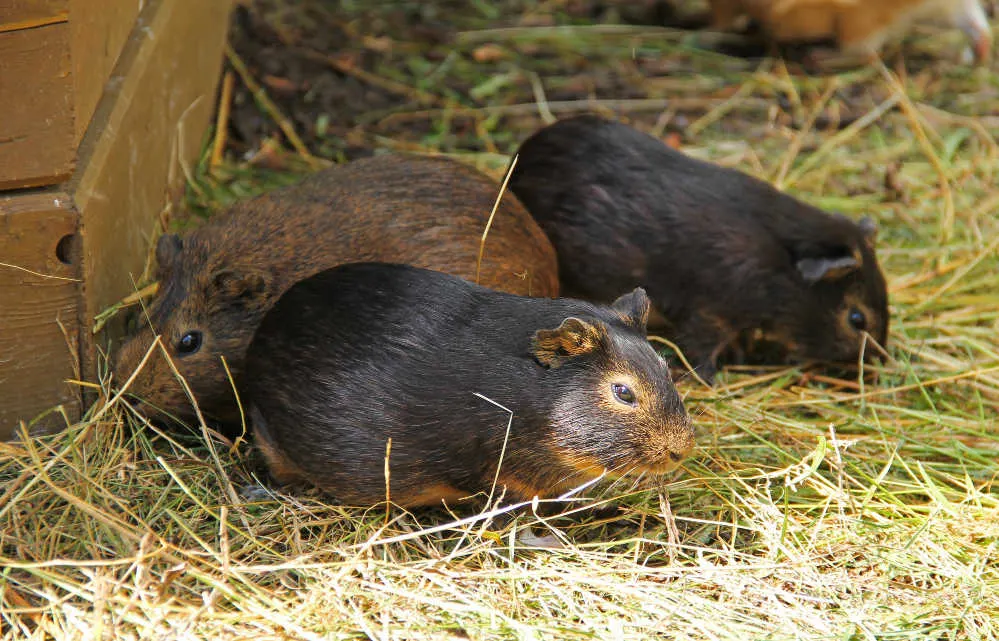
The good news is that you can add unlimited amounts of hay to their cage, and they should be fine. In fact, the majority of your guinea pig’s diet should be hay. You can ensure they have a healthy intake by adding a hay feeder like this one to their cage or sprinkling it around for them to find for themselves.
Note: Yes, you can use hay as bedding for your guinea pig. But, it can be challenging for them to differentiate between hay used for eating and soiled hay. So, consider alternatives like setting up your guinea pig cage with fleece instead.
Best types of hay for your guinea pig
There are a variety of hays to add to your guinea pig’s cage. Some are better than others, but what you choose to add depends on your pet’s needs and wants. Here are the best hays you can feed your pet.
Timothy hay
Even if you’re a novice guinea pig owner, you’ve probably heard of Timothy hay as it’s the most popular. And with good reason. This easily obtainable hay gives your cavy the right quantity of nutrients they need.
You’ll know you have Timothy hay when you see long strands of grass with a straw or light green color. Ensure you have plenty of sweet-smelling fresh hay to give your pet optimal benefits.
It is normal for your guinea pig to poop a lot. But, if they aren’t as regular as they should be, Timothy hay is a great help. Its high content of fiber will keep your pet regular.
Orchard grass
Orchard grass, sometimes called orchard hay, is a great alternative to Timothy hay. While Timothy hay isn’t the best for guinea kits because of the low calcium count, young and old alike can enjoy orchard grass.
Like people, your pets have food preferences. So, if you notice them picking at their hay but not really eating, consider switching it up to orchard grass. This type of hay is much softer compared to others, which could appeal to some pets more.
Sometimes guinea pigs (or you) could actually be allergic to Timothy hay. Allergic reactions in guinea pigs can include rashes and respiratory problems. If that is the case, Orchard grass is a great alternative.
Meadow hay
Meadow hay is a mix of plants ranging from straw to flowers and grass. Simply said, things you can find in a meadow.
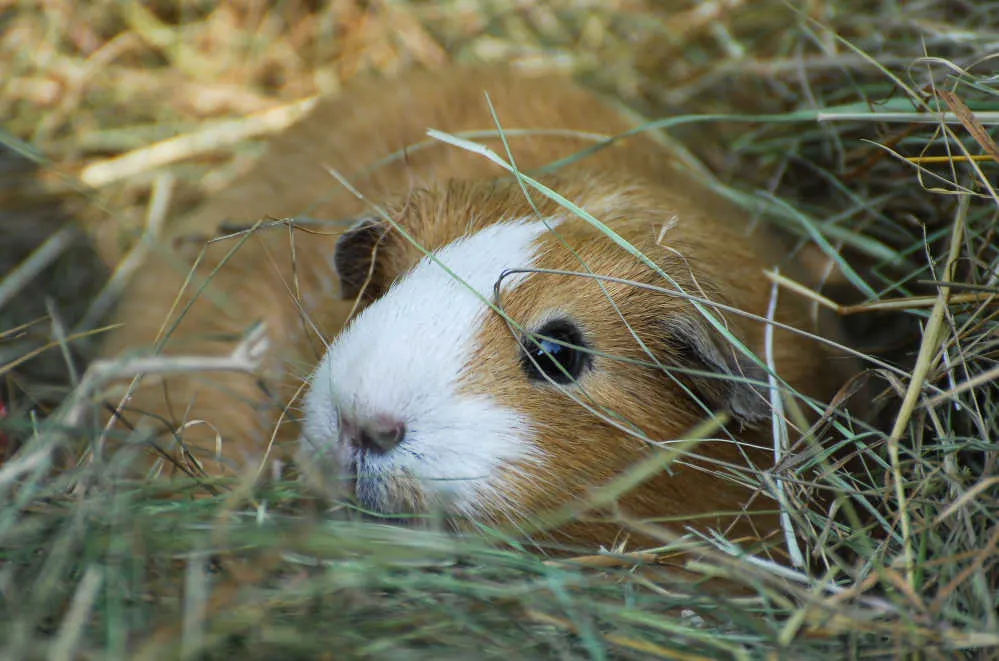
This blend is a great option if you have a guinea pig that loves to forage and eat a variety of things. While it has a good amount of calcium that is not unbearably high, it’s best to add it as a supplement. Compared to other hays on the list, it doesn’t have that much nutritional value.
Like orchard grass, Meadow hay is another great alternative for guinea pigs showing allergic reactions to Timothy hay.
Oat hay
Oat hay is quite a common type of hay to feed to your small pets. It is a type of wheat hay and a great option to up their protein and fat doses.
You’ll know you have good quality oat hay when it has coarse golden stems. However, because of their coarse stems, it may be a bit difficult for some pets to digest them. So, you can mix it with other hays to make it easier to eat.
This hay is also good for any allergies to Timothy hay, but shouldn’t be fed to them daily. Rather use it as an occasional treat because it has a high-fat content which could cause weight problems in your pet if not monitored.
Alfalfa hay
Alfalfa hay is very high in protein and calcium, which can be either good or bad.
Typically, guinea pigs should not be eating this unless they’re pregnant, recovering from neglect, still very young, or are prescribed it by a vet. This is because overconsumption of calcium can cause painful bladder stones in your pet.
If you’d like to include more protein and calcium, stick to leafy greens, bell peppers, and fresh fruits instead.
Final thoughts: do guinea pigs need hay?
As you can see above, guinea pigs need hay daily. It is an essential part of your guinea pig’s healthy diet as much as fresh greens and fruits are — especially for young guinea pigs.
Thankfully for them, there is no limit on hay. So there is no danger of overfeeding them with their favorite foods, as long as the calcium and fat content isn’t too high.
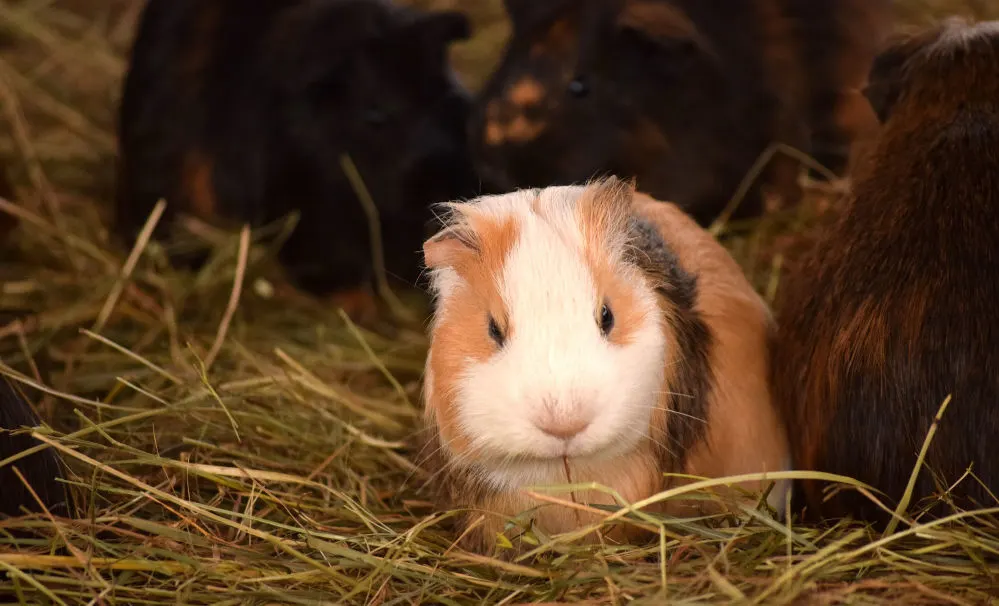
There are, however, different types of hay, and before you feed your pet any, it’s best to know what nutritional value each holds. Of course, some hays are better than others. But as long as you keep feeding them good quality hay, you and your pet should have no problem.
Steph Dyson is a travel journalist by trade but a lover of all small pets. She’s been a pet mum to everything from gerbils to guinea pigs, rabbits to hamsters, and fish to dogs of all shapes and sizes. She wants to share her years of experience with small pets and make Small Pet Guides the go-to website for pet owners seeking information and care advice.

